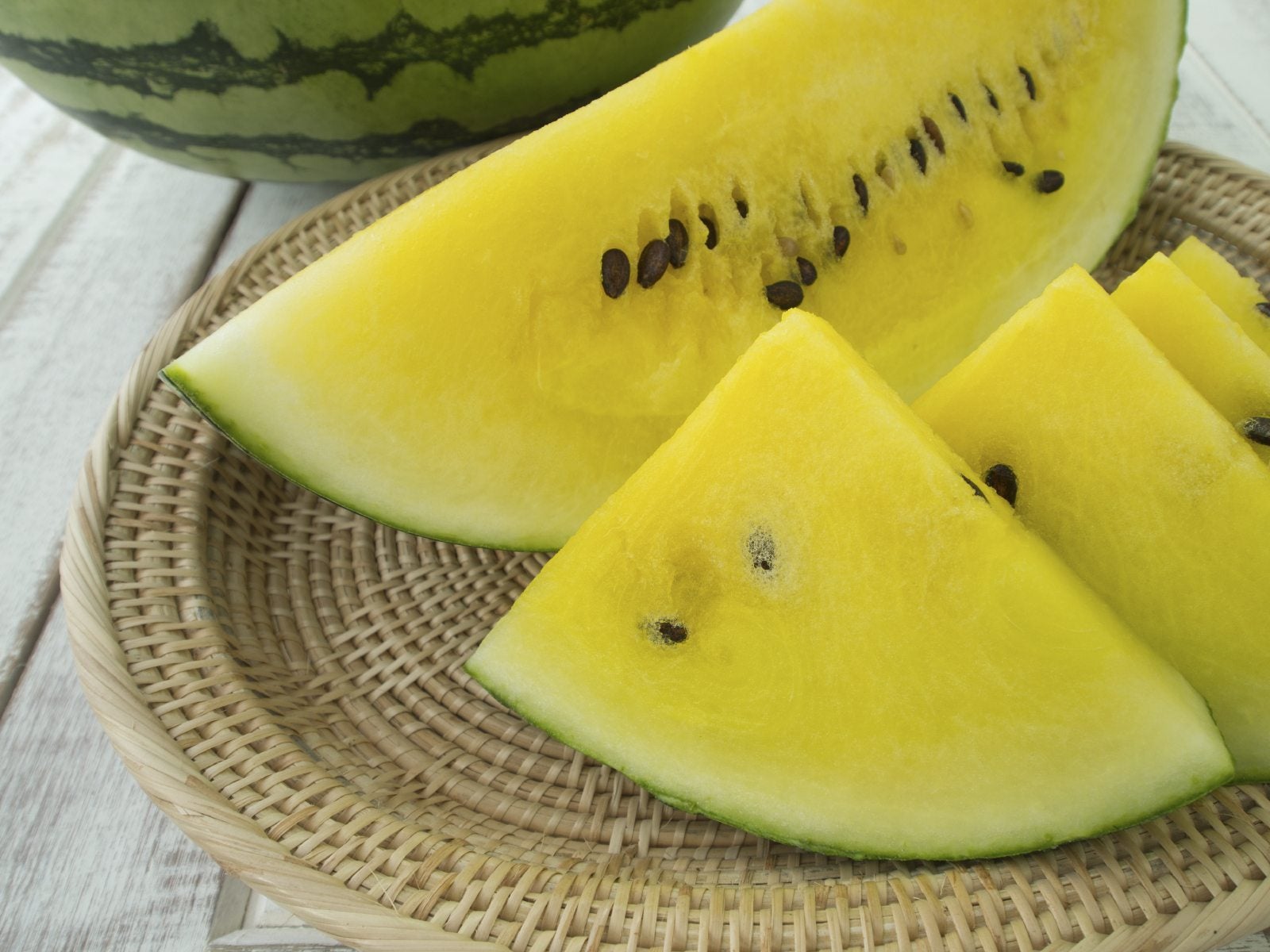Are Yellow Watermelons Natural: Why Your Watermelon Is Yellow Inside


Most of us are familiar with the popular fruit, watermelon. The bright red flesh and black seeds make for some sweet, juicy eating and fun seed spitting. Are yellow watermelons natural though? With over 1,200 varieties of watermelon on the market today, from seedless to pink to black rinded, it should be no surprise that, yes, even yellow fleshed types are available.
Are Yellow Watermelons Natural?
Yellow flesh on your watermelon might come as quite a surprise since the exterior doesn't look any different than the red variety. The flesh of watermelons turning yellow is a natural mutation. In fact, the originator of our commercial variety, which comes from Africa, is a yellow to white fleshed fruit. The fruit has a sweeter, honey-like flavor as compared to red fleshed melons, but many of the same nutritional benefits. Yellow watermelon fruit is now widely available and a fun alternative to traditional watermelons. Produce shopping is more fun than ever when purple kale, orange cauliflower, and blue potatoes frequent the produce aisle. Many of these foods have been manipulated and bred to produce their outrageous colors but yellow watermelon fruit is different. There are many naturally occurring hues of melons. These plants hybridize easily with each other and produce some unique forms and colors, with a wide range of flavors and sizes. A large field of melons may find that some watermelon is yellow inside, while other plants are producing red fruits. Once discovered, someone is going to maximize on the difference, collect seed and, voila, a new hued melon is born.
How to Grow Yellow Watermelons
So you are now sold and want to try a crop of your own? Yellow watermelon seeds are available from reputable seed merchants. Their growing conditions are the same as a red melon and there are several varieties from which to choose. Some varieties to opt for might be:
The original fruits, Citrullus lanatus, have become a botanist’s playground, with the flavor and flesh the primary characteristics, while size and rind color may be manipulated. If your watermelon is yellow inside, chances are it is a derivative of the parent and has been carefully bred to enhance certain other traits. Watermelon is a hot season fruit that requires well-drained soil with plenty of organic matter in full sun. Yellow watermelons need consistent moisture until fruit is the size of a tennis ball. Thereafter, water when soil is dry several inches (8 cm.) down. A week before the fruit is ripe, withhold water to intensify the sugar in the flesh. These plants need plenty of room to spread. Space 60 inches (152 cm.) apart and avoid overhead watering, which can cause foliar diseases. Harvest your yellow melons when the rind becomes dull green and a good rap on the fruit results in a dull thud. Store melons for up to three weeks in a cool area. Now that you know how to grow yellow watermelons, enjoy their golden fruits as a fun surprise to spring on friends and family.
Sign up for the Gardening Know How newsletter today and receive a free copy of our e-book "How to Grow Delicious Tomatoes".

Bonnie Grant is a professional landscaper with a Certification in Urban Gardening. She has been gardening and writing for 15 years. A former professional chef, she has a passion for edible landscaping.